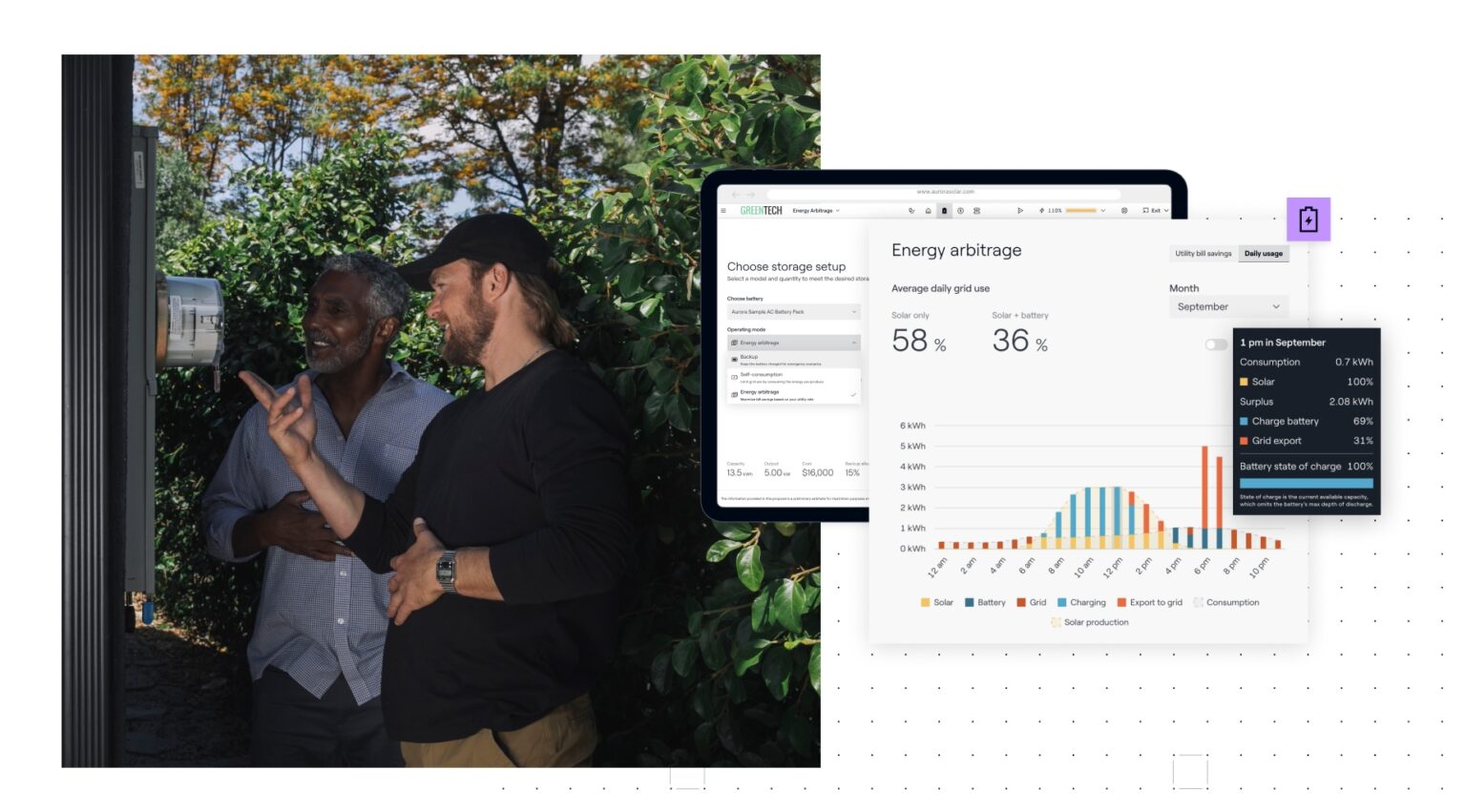Video: Overview of Avalon Whole-Home ESS from Fortress Power
The battery specialists at Fortress Power have officially unveiled their Whole-Home Energy Storage System solution with Avalon. The Avalon Whole-Home combines a hybrid inverter, high-voltage battery, and a smart energy panel.
The spec sheet is impressive for a few reasons. Fortress focused on higher voltage architecture, and included innovative battery temperature management. They also purpose-built the hybrid inverter and Smart Energy Panel for the system. Fortress is so confident in how the Avalon functions, that it is offering a 15-year warranty on the battery – extendable to a 25-year with replacement – if you finance the system through them.
To understand more, we chatted with Fortress Power Solutions Engineer Avtandil Giorgadze on this episode of The Pitch. Watch the full 15-min chat right here, skip to a section, or read the full transcript below.
- 0:33 – Avalon smart energy panel – why it’s important
- 2:28 – How many loads can the panel handle?
- 3:29 – Battery overview: How to achieve 95% roundtrip efficiency
- 5:07 – Battery capacity & stackability options
- 7:34 – Active heating, passive cooling & fire safety innovations
- 9:44 – 15 to 25 year warranty terms & financing explained
- 11:40 – Hybrid PV inverter specs
Smart Energy Panel details
Let’s start with the Smart Energy Panel (SEP). First: Must the Avalon be installed with the Smart Energy panel or is that optional?
Giorgadze: As of now at least, the Avalon system is the system. When you purchase the Avalon system, the SEP is definitely included, and the Smart Energy Panel makes the Avalon system because you can have multiple inverters, multiple battery units, multiple battery modules per unit, but you always have one Smart Energy Panel per Avalon system.
Why should I want to install the SEP? What differentiates it from others?
Giorgadze: The whole idea behind the Smart Energy Panel is that it combines everything AC because the inverter output, from the point of view of the Smart Energy Panel, that’s just another AC source. So: generator, AC-coupled solar, grid, main electrical panel, critical load panel, EV charger – which is separate and has its own load shedding – and up to three Avalon inverters. … You don’t have to worry about putting in the combiner panel, distribution panels, or whatever. The Smart Energy Panel does the job of combining everything together.
If you’re doing whole home backup, most of the time you have to install the critical load panel. But here, if you’re doing whole home backup, you just retain your main electrical panel and take advantage of the load shedding circuits that we have built into the Smart Energy Panel.
The Smart Energy panel has 12 positions. How can I divvy that up? Can you give me some examples for how it handles larger loads like an air conditioner?
Giorgadze: Strictly speaking there are 14 load shedding ports because there are two dedicated specifically for the EV charger. Theoretically that could be repurposed for something else, but out of the box it’s a load shedding circuit for the EV charger that you’re going to install. It can support the level two EV chargers.
If you’re trying to low shed a split-phase circuit, you’re going to use two load shedding elements. If you’re working with a single-phase load, you’re going to use just one. So, you can have six split-phase circuits, or 12 single phase circuits, or any combination of the two. HVAC is a big load, and it’s most definitely a split-phase load, so you’re going to use at least a pair of load shedding circuits.
Avalon Energy Storage System
The Avalon ESS sports a 95% roundtrip efficiency, which seems higher than most that I’ve seen. Can you explain how you accomplish that?
Giorgadze: Fortress batteries always have been 48 volt batteries, and they were connecting to each other in parallel. Here, our battery modules connect to each other in series, and we have high-voltage batteries. The more modules you have — you can have up to six per unit – the higher the voltage becomes. With a higher voltage system, the natural efficiency is there because the higher the voltage for the set amount of power, the lower the current. The lower the current, the lower the losses related to heat that the conductor generates.
Another thing is that the DC-coupled PV is a high voltage circuit. You have multiple PV modules connected to each other in series, so a high voltage battery is closer in terms of voltage to the PV strings that you’re connecting to the inverter, which means that the MPPT and the charge controller don’t have to work as hard to bring the really high voltage down to 48 volts.
Also, we have inverters that are MOSFET based. It would be extremely difficult to achieve such efficiency if we had transformers inside our inverters, which we don’t.
The stackable battery capacity ranges from 14.7 to 29.4 kWh, and then that’s scalable up to 176.4 kWh. Why is it stackable to 29.4 considering 20 kWh is seemingly a cap for residential?
Giorgadze: The smallest quantity of battery modules that you can have per unit is three, each of them being 4.9 kWh. Three of them would give you 14.7 kWh. On top of those three, you would have the battery management unit. So having the four modules stacked on top of each other would keep you under that 20 kWh “limit,” but it’s not necessarily a limit.
If we refer to NFPA 855 code, when it’s talking about the kilowatt hours per battery unit and separations, it has this line that says [paraphrasing] If you have completed large scale fire testing, the Authority Having Jurisdiction shall be allowed to consider the energy storage capacity per unit greater than 20 kWh.
So, if the AHJ uses that power, then you can have units up to 50 kWh, and you can have smaller separation distances. That comes down to the large scale fire testing, which we have completed, and we have certifications to prove it and to support it.
Can you explain the active heating and passive cooling temperature management?
Giorgadze: I’m not aware of other systems on the market that have the active heating built in. We have commercial systems as well, and some of the technology from the commercial systems easily trickles down to the residential batteries. A good example of that would be the active fire suppression system, which is inherent to every single battery module.
So, per battery module, you have active heating and fire suppression system built in, and more of a heat redistribution (rather than call it passive cooling) so that all the cells are at the same temperature. The “wear” is more even from cell to cell, and that contributes to the longevity of the battery unit.
The active heating, the way it works, is that the cells are wrapped by the heater, and the battery takes care of itself. When the temperature drops below a certain point, I think now the set point is either 35 or 40 degrees F, once the temperature goes below that, the heating turns on, and it uses the battery power. It doesn’t need the grid or PV as long as the battery has energy capacity beyond 20%.
This allows us to expand the battery operating temperature range even further because we use lithium ferro phosphate (LFP) cells in our batteries. All of them are grade-A LFP prismatic cells. Lithium cells generally are not charged if the cell temperature falls below the freezing point … it could collapse the cell internally. Our heater gives you a 10 degrees F edge over the ambient temperature. In terms of discharge, you have a broader temperature range to work with.
Pick up the rest of the conversation to understand warranty terms, financing, and the role the hybrid inverter plays for enhancing rooftop solar output.





Comments are closed here.